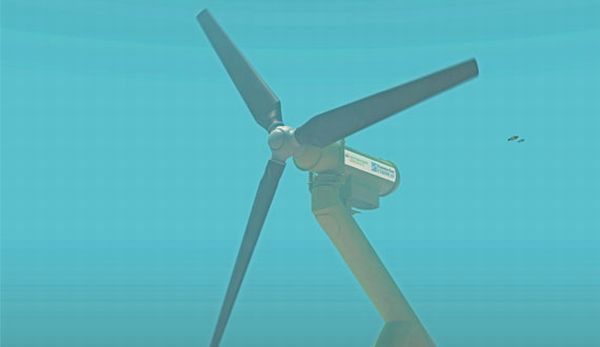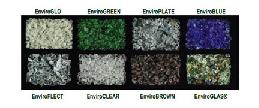
What’s happening right now?
The paradigm is slowly but surely shifting towards a sustainable future, as revealed by this welcome statistics – around 19 percent of global final energy consumption came from renewable energies. Added to that, the share of renewables in electricity generation is around 18%, with 15% of global electricity coming from hydroelectricity. Now ocean energy is one of the newer yet important part of the total spectrum of hydroelectricity, as the electric generating potential of the ocean is enormous – up to 3 terawatts a year from ocean waves, and 0.8 terawatts from tidal flows, according to a 2005 study of MIT. Moreover wave energy is already less costly than its comparable counterpart wind energy, and an Electric Power Research Institute (EPRI) report found that if wave had obtained the same government subsidies as wind, it would be a far more advanced technology than at present.
Trends:
1. bioWAVE Ocean Wave Power System:
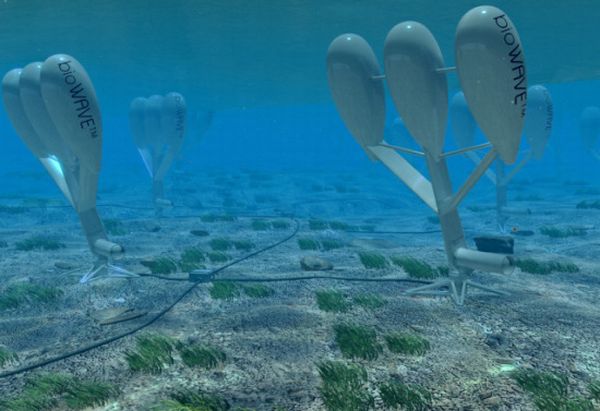
Australian company, BioPower Systems have come up with two technologies to harness clean power from the seas – bioWave™ from the ocean, and bioStream from tidal currents in streams. Both the systems will be constructed under water and connected to smaller grid systems for clean energy generation. And the company has already mentioned that their design would not hamper the fabric of marine life.
2. Oyster Machine To Harvest Wave Power:
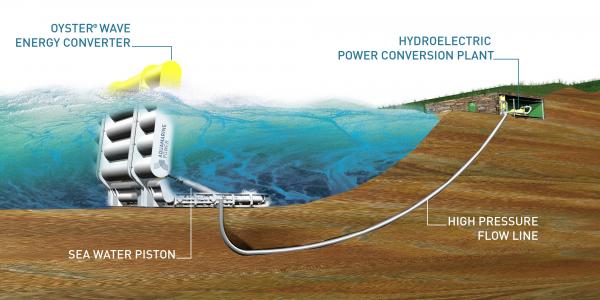
Oyster is a mammoth contraption designed for utilizing the power of ocean waves and converting them into electricity. Installed off the Atlantic shores of the Orkney Islands, the oscillators inside this gigantic device are fitted with pistons. Once these pistons become impelled by the wave movement, they start to pump high-pressure water through a underwater sea pipeline to the shore. The high pressure water is then converted to electricity by conventional hydroelectric generators. The whole system being deployed at near-shore water depths of 12 to 16 meters, takes advantage of more precise directional spread of the waves in this edge of the sea.
3. Green Ocean Energy’s twin devices to generate wave energy:
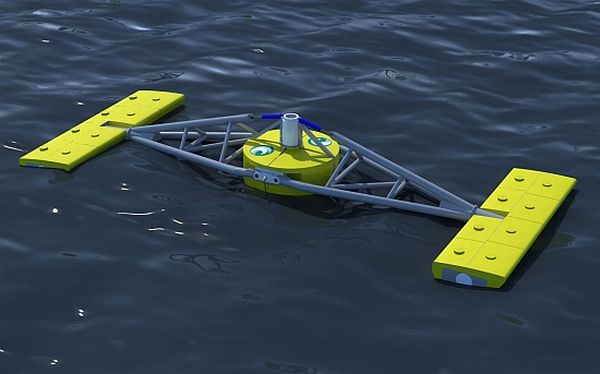
Green Ocean Energy will be designing two innovative devices – Ocean Treader and Wave Treader, which will float on the surface of ocean while the motion of waves activate the attached floating arms to move up and down, in order to power onboard generators. Each of the devices can generate an output of around 500 KW (transferable through underwater cables), which is enough to power 125 homes.
4. Scotland to unveil the world’s largest tidal turbine proposal in Sound of Islay:

Big is about to get beautiful now; the Scottish government has approved the ScottishPower Renewables’s grandiose plan of a £40 million mega tidal turbine project, off the west coast of Scotland in Sound of Islay. It is already touted that this 10 MW facility will generate enough electricity for more than 5000 dwellings, which by the way is double the present number of homes in Islay.
5. Underwater Kite Turbines:

This is a unique design contrived by Swedish renewable energy company Minesto and rather influenced by wind power generation. The conception features underwater kites spanning 8-14 meters, with a turbine attached to its ‘underbelly’. Depending on the location and size of the kites, each will have an estimated capacity of between 150 and 800 kW, and can be deployed in waters 50-300 meters deep.
6. WSG generates renewable energy day and night:
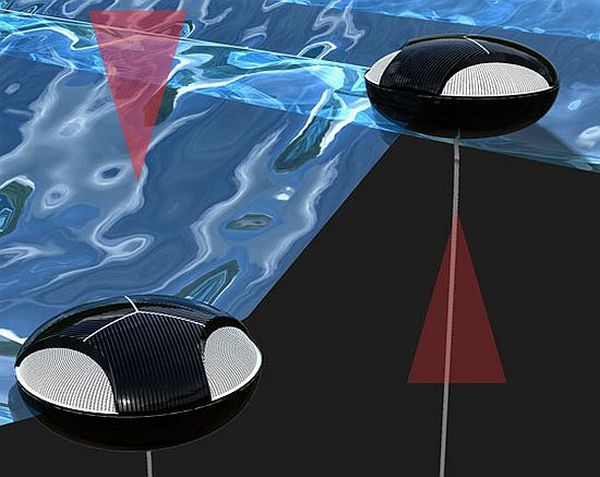
Korean designers Seung Woo Jung, Jung Seung Woo, Kim Hyun Jun and Kim Min Jung have conceived of an utterly adroit idea. The WSG, or Wave and Solar Energy Generator will be designed in such a way so that it can produce clean energy from ocean tides, waves and sun during the day time, but during the night time, the device will continue to generate power by utilizing only the tides and waves.
7. Researchers conceptualize Wing Waves to generate energy from ocean’s swells:
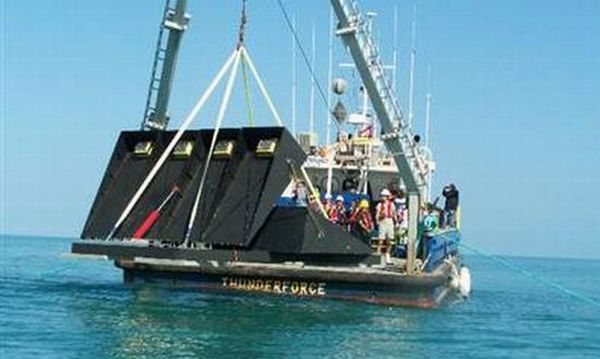
A team of researchers at the Florida Institute of Technology’s College of Engineering have thought of Wing Waves, which will be basically – a pair of eight-foot-tall metal wings that can flap to and fro, once jerked by the ocean’s swells. The flapping mechanism in turn will instigate the elliptical motion of waves 30 feet to 60 feet beneath the surface, which is then converted into mechanical energy and later into usable clean electricity. The researchers estimate that one square mile of wings, which will have about 1000 units, will be able to provide power to more than 200,000 homes!
8. SOLO-TREC:
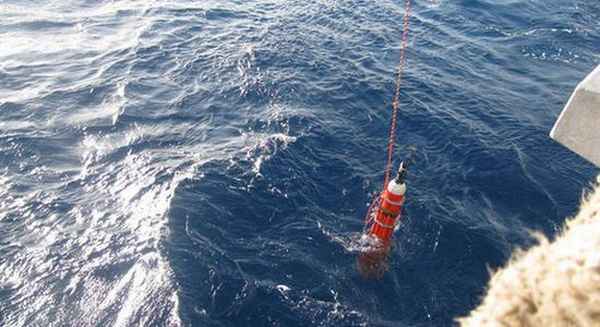
SOLO-TREC, or Sounding Oceanographic Lagrangian Observer – Thermal RECharging is one state-of-the-art contraption that makes use of the unlimited energy of ocean currents. Fundamentally it is an engine that can dive up to 500m below the surface of the ocean and generate power in excess of 1.6 watt-hours (5760 Joules) with each dive, which is actually sufficient for working of on-board electronic equipments of ships.
The concept:
Wave energy can in fact be categorized as a form of wind energy, albeit in a completely different medium i.e. water. Essentially wave energies develop from winds above the sea; winds which come into bearing because of the temperature differences of the earth’s uneven surface. Tidal power on the other hand is a form of hydropower that converts the energy of tides into electricity or other useful forms of power.
The advantages:
There are a myriad of benefits that can be attached to the harnessing of ocean power (marine power). But firstly we should remember that it is a form of completely clean and ‘green’ energy with almost zero carbon emission. Secondly the oceans (covering around 70 percent of earth’s surface) have a tremendous amount of energy and are close to many if not most concentrated populations, and that is why many researches show that ocean energy has the potentiality of providing for a substantial bulk of new renewable energy around the world. And thirdly and most importantly they can be made significantly cost effective to be utterly practical and convenient in their heavy usage.
The Impact:
The immense magnitude of energy brewing in the oceans can only theoretically end with the ending of our very Earth. Furthermore with the repetitive cycles of the gravitational pull of moon and the flowing of winds, there is a gargantuan amount of water propelled towards the land each day. And if we even manage to moderately use a fraction of this unfathomable power, our sustainability woes can diminish by a huge margin. To give a taste of things to come, in the very near future, analysts are forecasting that ocean power will alone account for at least 2 percent of the energy needs in U.S., which is like catering to more than 6 million people!


